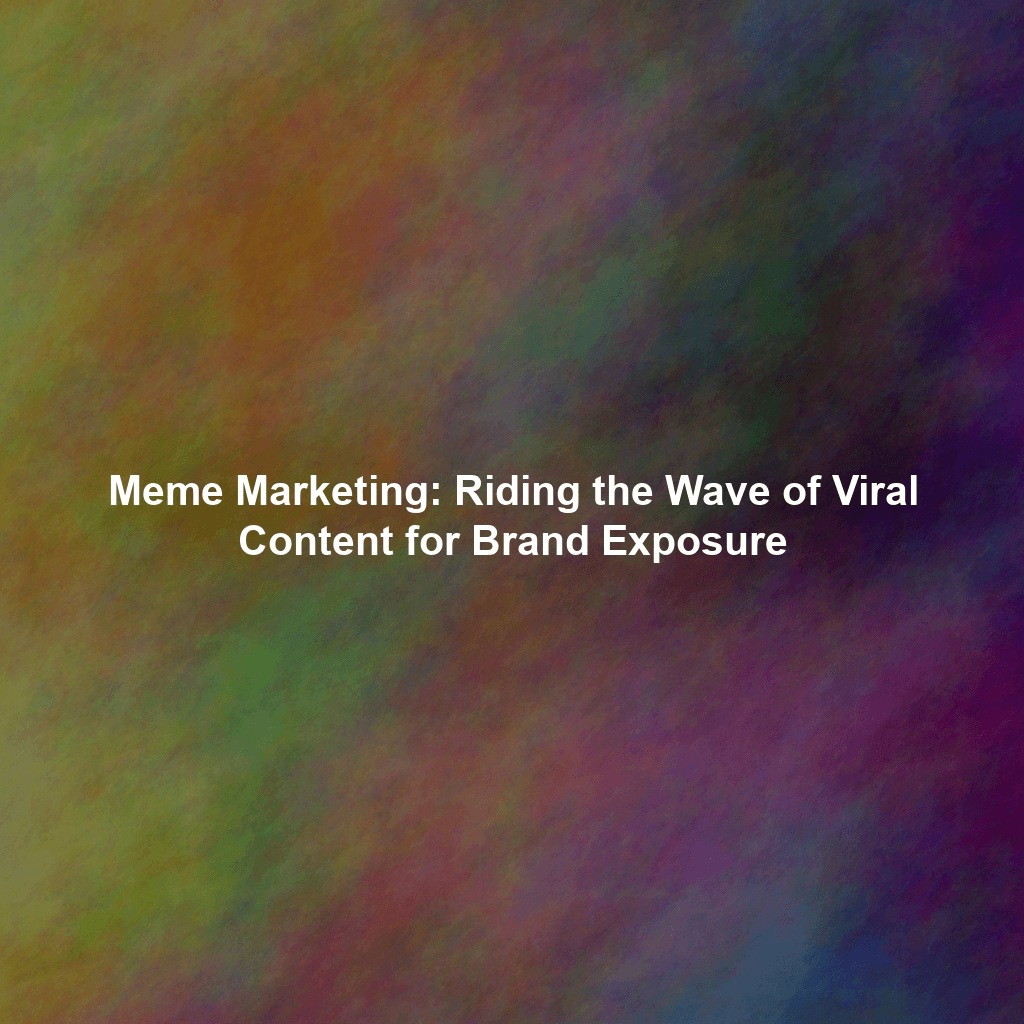In the ever-evolving digital landscape, marketers are constantly searching for innovative and, let’s face it, sometimes downright weird ways to cut through the noise and grab attention. Forget traditional ads – we’re diving headfirst into the bizarrely effective world of meme marketing. Yes, you read that right. Those goofy pictures with witty captions that flood your social media feeds can be a powerful tool for brand exposure and, surprisingly, substantial growth.
Why Meme Marketing is More Than Just a Joke
Meme marketing, when done right, is a shortcut to relevance. It allows brands to tap into current trends, show off their personality, and connect with audiences on a relatable level. It’s a way to say, “Hey, we get you. We’re in on the joke.” But before you start slapping your logo onto every trending image, let’s explore how to wield this power responsibly (and effectively).
The Power of Relatability
Memes thrive on shared experiences and inside jokes. When a brand successfully utilizes a meme, it signals to the audience that they understand their culture and humor. This relatability fosters trust and builds a stronger connection with potential customers. Think about it: would you rather buy from a faceless corporation or a brand that seems like a friend?
Viral Potential Unleashed
The beauty of memes lies in their inherent virality. They’re designed to be shared, tagged, and reposted. A well-executed meme campaign can spread like wildfire across social media platforms, reaching a vast audience organically and generating significant brand awareness. It’s like free advertising, but with a much higher engagement rate.
The Art of Meme Marketing: A Step-by-Step Guide
So, how do you transform your brand into a meme-generating machine? It’s not as simple as copying and pasting popular formats. Authenticity and relevance are key. Here’s a breakdown of the essential steps:
Know Your Audience (Like, Really Know Them)
Before you even think about memes, you need a deep understanding of your target audience. What are their interests? What platforms do they frequent? What kind of humor resonates with them? This research is crucial for creating memes that will actually land.
Stay on Top of Trends (But Don’t Be a Try-Hard)
Meme culture moves at lightning speed. What’s trending today might be dead tomorrow. Use tools like Google Trends, Reddit, and social media listening platforms to identify emerging memes and trends. But remember, forced memes are the cringiest memes. Only participate if you can genuinely add something funny or insightful to the conversation.
Authenticity is King (and Queen)
Nothing screams “corporate” louder than a meme that feels inauthentic or forced. Don’t just jump on a trend for the sake of it. Make sure the meme aligns with your brand values and resonates with your audience. If your brand is known for its seriousness, a goofy meme might feel out of place. Choose memes that reflect your brand’s personality and message.
Don’t Just Sell, Entertain
The primary goal of meme marketing isn’t to directly sell your product or service. It’s to entertain and engage your audience. Focus on creating memes that are genuinely funny or relatable, and the brand exposure will follow organically. Subtle product placement is okay, but blatant advertising will likely backfire.
Platform Matters
Different platforms have different meme cultures. What works on TikTok might not work on LinkedIn. Tailor your memes to the specific platform you’re using. For example, Instagram is visually oriented, so high-quality images are essential. Twitter is all about quick wit and concise messaging.
Monitor and Adapt
Once you launch your meme campaign, pay close attention to the response. Are people sharing it? Are they commenting? Are they engaging with your brand in a positive way? Use this feedback to refine your strategy and adapt to changing trends. If a meme falls flat, don’t be afraid to pull it and try something new.
Examples of Meme Marketing Done Right (and Wrong)
Let’s look at a few examples to illustrate the dos and don’ts of meme marketing:
The Good: Netflix
Netflix is a master of meme marketing. Their social media accounts are filled with witty and relatable memes that perfectly capture the struggles and joys of binge-watching. They understand their audience and consistently create content that resonates with them.
The Bad: Brands Trying Too Hard
Remember that time a certain fast-food chain tried to make “bae” happen? Yeah, cringe. The attempt felt forced and out of touch, resulting in widespread mockery. The lesson? Don’t try to be something you’re not.
Potential Pitfalls to Avoid
Meme marketing isn’t without its risks. Here are some potential pitfalls to watch out for:
- Offending Your Audience: Be mindful of cultural sensitivities and avoid memes that could be interpreted as offensive or discriminatory.
- Misunderstanding the Meme: Make sure you fully understand the context and meaning of a meme before using it. Misinterpreting a meme can lead to embarrassing and potentially damaging PR disasters.
- Intellectual Property Issues: Be careful when using copyrighted material. Always give credit where credit is due and avoid using memes in a way that could infringe on someone else’s intellectual property rights.
Conclusion: Embrace the Weird, But Stay Authentic
Meme marketing is a powerful tool for growth hacking, but it requires a delicate balance of creativity, authenticity, and cultural awareness. By understanding your audience, staying on top of trends, and avoiding common pitfalls, you can leverage the power of memes to boost brand exposure, build stronger connections with your customers, and ultimately, drive growth. So, embrace the weird, dive into the meme-verse, and get ready to ride the wave of viral content. Just remember, authenticity is your anchor – don’t let the tide sweep you away.
 Skip to content
Skip to content

